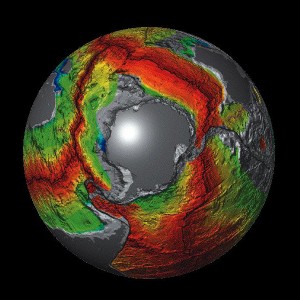“Knowing what a chicken looks like and what all the chickens before it looked like doesn’t help us to understand the egg,” says Taras Gerya. Similarly, whilst the mechanisms for continuing tectonic plate movement are widely understood, the events that first set them in motion are yet to be identified. Gerya and other geophysicists from ETH Zurich have found a possible solution, which has been published this month in Nature.
THURSDAY, 26 NOVEMBER 2015
 The plumes formed weak spots allowing parts of the crust to descend into the mantle
The plumes formed weak spots allowing parts of the crust to descend into the mantle The Earth’s lithosphere was first broken and set in motion by plumes formed deep in the interior of the planet; a hypothesis supported by the research group’s high-resolution 3D thermomechanical modeling data. These plumes formed weak spots allowing parts of the crust to descend into the mantle and form the first subduction zones, lubricated by the buried seawater. Forces in the mantle stretched the circular weak points over time; breaking the lithosphere into separate plates. The scientists also noted that locations where three plates come together at ‘triple junctions’ could be the sites where the lithosphere was stretched and broken by the upcoming plumes, for example at the Horn of Africa, where the African, Arabian and Indian plates meet. Nowadays, subduction zones are self-perpetuating; the power of the plumes is no longer required.
Venus has never had plate tectonics, so Gerya and his group used it as a model. They found coronae (crater-like circles) on its surface and have proposed that these could have also been plausibly made on Earth in conditions around the Precambrian period, when the mantle was very hot whilst the lithosphere was hard and cool. Before this period the lithosphere would have been to warm and flexible to break under the pressure of the plumes beneath.
The study would not have been possible without the aid of computer modeling. There is no geophysical data from that period and the time scale and enormity of the events make replicating them in the lab impossible. Computer models are therefore the only way we can reproduce and understand the events of the Earth’s early history.” says Gerya.
DOI: 10.1038/nature15752
Written by Zoe Carter.
 The plumes formed weak spots allowing parts of the crust to descend into the mantle
The plumes formed weak spots allowing parts of the crust to descend into the mantle 